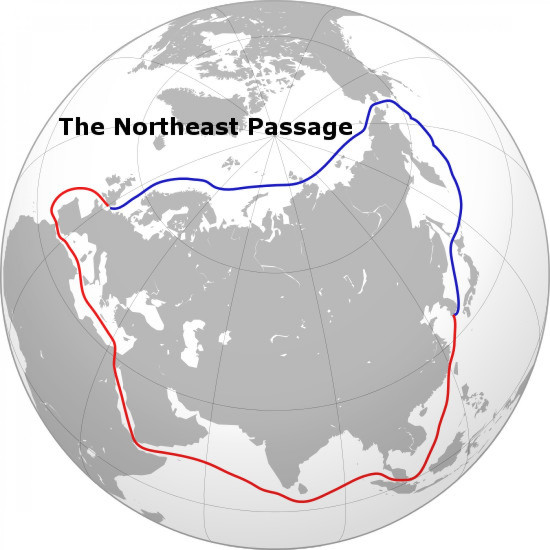Arctic Maritime Traffic Over Russia Breaks Last Year's Record

There's a month left before the onset of winter halts the Arctic maritime traffic between Europe and Asia, and already the number of cargo vessels traversing the Northern Sea Route this year is higher than last year’s record haul -- another sign of global warming that could soon make this shipping lane a much busier route.
Thirty-five cargo ships transported more than a million tons of goods -- mostly Russian petrochemicals -- through the mostly Russian-owned northeastern maritime passage, according to Barents Observer, an English-language publication in Murmansk, 830 miles north of St. Petersburg.
While still representing only a drop in the proverbial bucket of cargo traffic -- about 18,000 ships take the longer southern route through the Indian Ocean every year -- this is the second consecutive record year for shipping traffic in waters above Russia and Scandinavia and the first time more than a million tons has been hauled via a waterway that’s only open five months out of the year on average.
Last year, the last ship to travel over Russia reached the Pacific Ocean on Nov. 18, according to the report. This year ships are expected to be able to make the passage through most if not all of November.
The implications for decreasing ice and increasing human traffic and development in both of the world’s northern sea routes are manifold. They include the positive economic impact on higher port activity in Northern Russia, multinational mineral-rights and territorial disputes, and concerns over the environmental impact of increased drilling. Already northern hemispheric countries are drawing up overlapping Arctic boundaries that will become more pronounced as more of Earth’s icy cap becomes warmer. Last month, a container with a blessing from Russian Orthodox Patriarch Kirill was dropped to the North Pole seafloor asserting Russia’s 1,150 years of statehood and the country’s claim to the world’s northernmost point.
Commercial shipping in the Northern Sea Route has been ongoing since at least 1920, according to Russia’s State Nuclear Energy Corporation (Rosatom), which manages the country’s massive nuclear-powered icebreaking ships that pry open channels for Russian traffic year-round.
But only in recent years has the prospect of a long open-water season over Russia become one of those “it could happen in our lifetime” things. It was only in 2009 that the first commercial cargo traffic made the passage between Asia and Europe on open blue Arctic waters, which was only two years after scientists first set eyes on satellite images that showed a fully navigable Northern Sea Route.
© Copyright IBTimes 2025. All rights reserved.






















